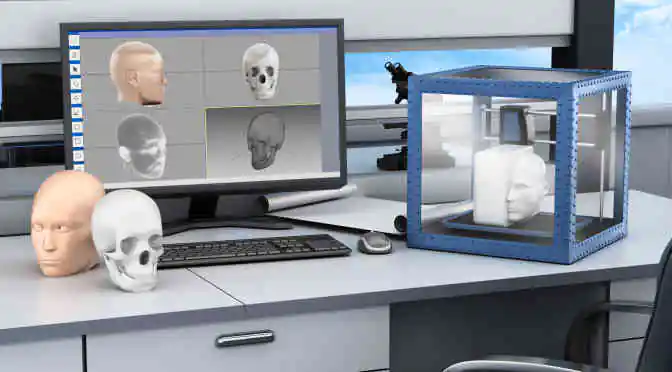Today people can 3D print almost anything. But having a scanner can enhance one’s creativity. A 3D scanner examines an object or environment and captures data around its shape and appearance. The captured data helps construct a digital 3D representation of the pieces. With each passing year the speed and accuracy of the 3D scanners is being improved significantly. The technology is making remarkable improvements making this potent tool quite reliable and cost-effective for commercial use.
3D scanning and its various applications
Until recent times, 3D scanners were largely deployed for industrial appliances, but as 3D printing has become more common, the applications of scanning devices have widened to several sectors mainly healthcare, architecture, and engineering along with automobile, survey, forensics, and animation industry. However, not all 3D scanners are crafted on the same scale. One consideration when choosing a scanner is the nature of the environment in which it will be used.
- Industrial manufacturing: In a manufacturing environment, an industrial 3D scanner is ideal. The different 3D scanners for industries are designed to perform in noisy, dusty manufacturing atmospheres and ambient lighting. They are also designed for use by operators and technicians rather than scientists or engineers. The conception, design, planning, and execution of a smart factory require extensive use of 3D scanners and CAD solutions.
- Healthcare: 3D medical scanning technology has opened up a new wave of advancement in the healthcare and has emerged as an asset in developing novel medical applications at affordable prices. 3D scanners are used in healthcare to design and customize prosthetic and orthotic devices. These scanners can produce accurate and quick scans of body parts, which can be printed using 3D printers.
- Architecture and engineering: 3D scanner is a significant component of the engineering, architecture, and construction processes. Measurements of complex structures and objects, deformation monitoring, project supervision and quality control are the extreme applications of 3D scanners in design and architecture.
Terrestrial scanning helps engineers save a lot of time on planning and cost of labor. Experts in this area regularly use 3D scanners for construction, historic preservation, and building inspection projects.
Technavio Market Solutions: Adding Value to your Business
The global 3D scanner market is gaining significance in numerous industries and continuously evolving to serve multiple applications. The constant evolution of the industry are the noteworthy points for vendors to study the market properly before entering.
Technavio’s comprehensive market insights will discuss all the important facets of this fast-evolving industry to aid the associated firms to gain an in-depth knowledge of the market and competitive landscape.



